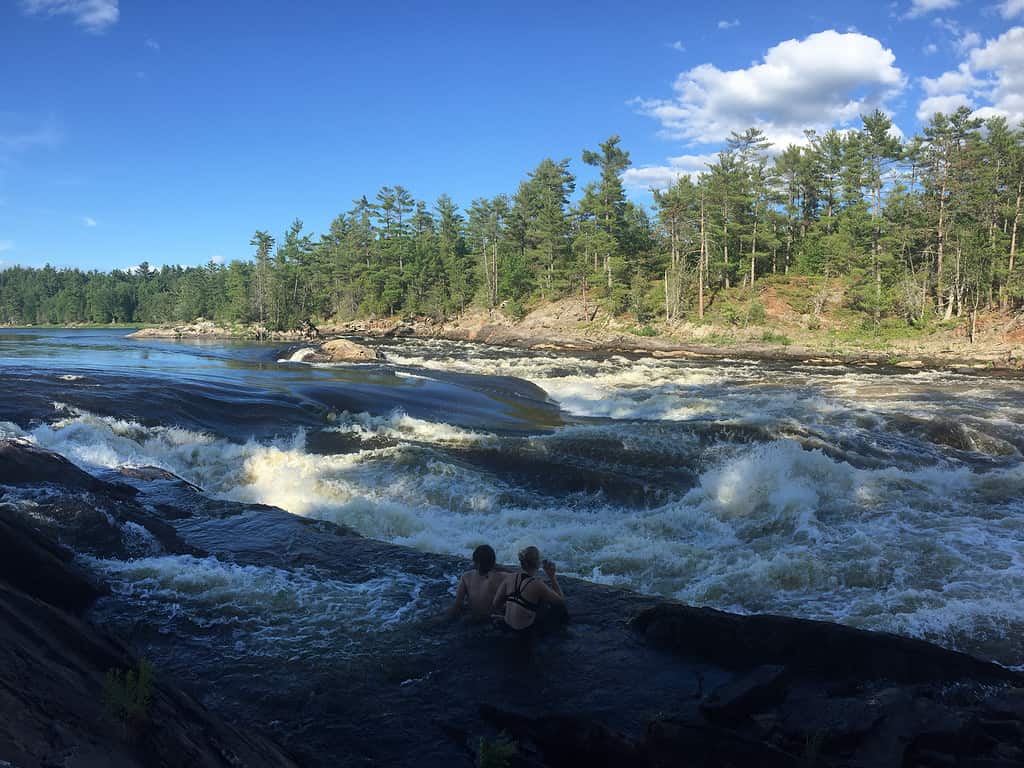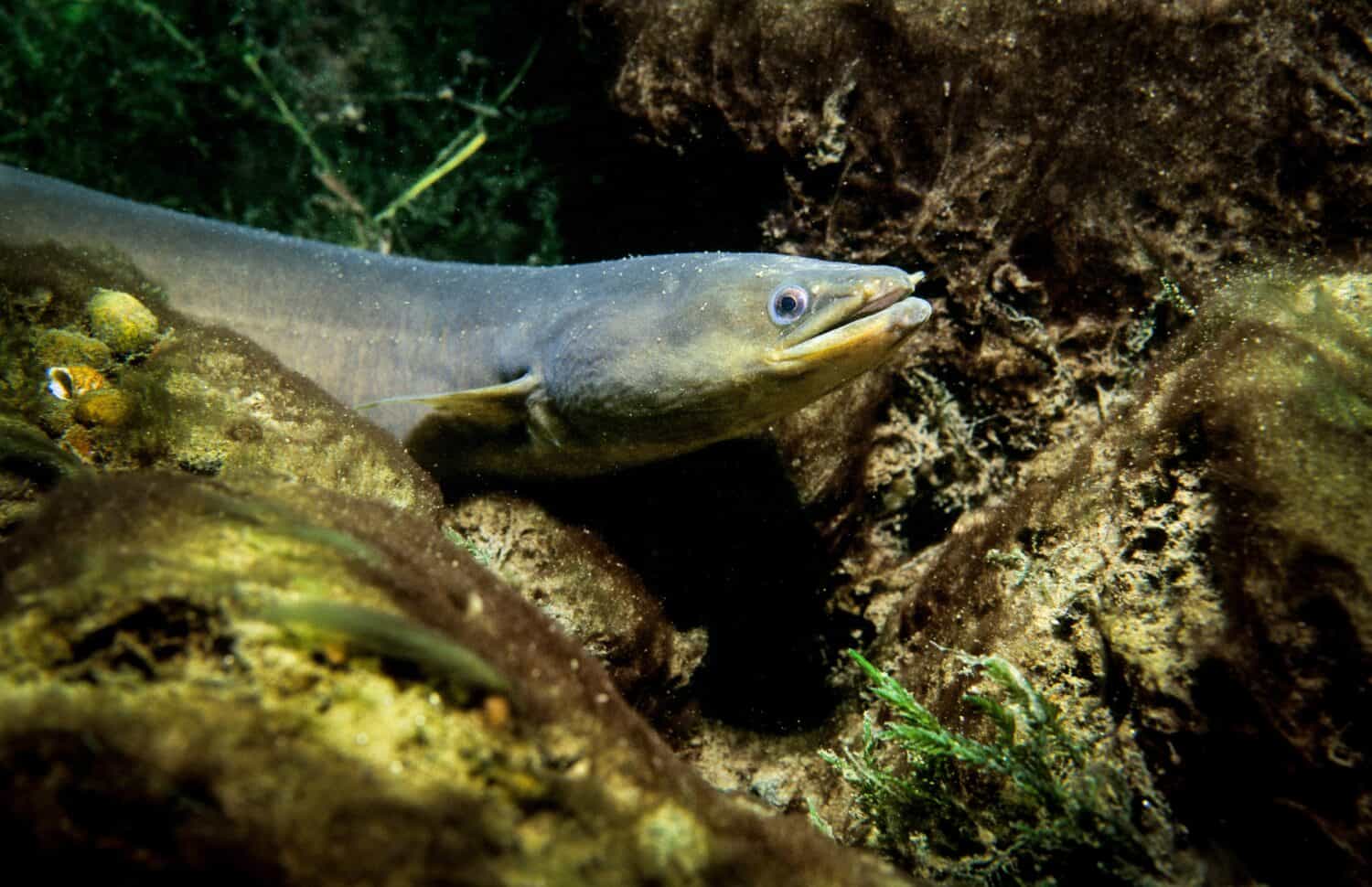Dividing the Canadian territories of Quebec and Ontario, the Ottawa River flows southward for hundreds of miles. It starts quite slow, eventually developing into a deep, fast-moving river. People have relied on Ottawa’s deep water for hundreds and even thousands of years for food and water as well as trade and transportation.
In this article, we’ll find out where the Ottawa River begins and, from there, how far it flows. We’ll compare its length to a few other major Canadian rivers, learn about some of the stops along its course, and find out some of the ways human activity impacts the river and its inhabitants.
Where Does the Ottawa River Begin?
The Ottawa River forms as water exits the boundaries of Lac des Outaouais, roughly 155 miles (250 km) north of Ottawa and 180 miles (290 km) northwest of Montreal. From there, it meanders westward to Lake Timiskaming and turns south, collecting water and gaining speed on the way to its junction with the St. Lawrence River.
How Long Does It Run?
From its headwaters in central Quebec, the Ottawa River runs about 780 miles or 1271 kilometers. It serves as the territorial division line between Quebec and Ontario for its entire run. Because of its great length and volume, people have relied on the Ottawa as a water source and a facilitator of trade for hundreds or even thousands of years.
Many towns and cities are located along the river’s banks. Far south along its route, it passes Gatineau, Quebec, which sits directly across the river from Canada’s parliamentary capital of Ottawa in Ontario. After leaving Ottawa, it continues eastward, passing through Montreal before reaching its mouth at the Lake of Two Mountains and feeding into the St. Lawrence River. From this junction, the water flows several hundred more miles to its final destination in the Atlantic Ocean.

The Alexandra Bridge allows people to cross the Ottawa River, which separates Ontario from Quebec.
©Gregory Valle/iStock via Getty Images
How Does the Ottawa River Measure Up?
The Ottawa River is a major feature of eastern Canada. It is the second-largest river in the region, trailing just behind the North Saskatchewan River, which runs for 799.7 miles (1287 km). Behind the Ottawa in terms of length is the Saint Lawrence River, which flows for 744 miles.
While it doesn’t quite cut the longest river in eastern Canada, the Ottawa tops the country’s charts in terms of overall depth. It also changes in elevation quite a bit from start to finish. Over its entire run, the Ottawa drops nearly 1250 feet, beginning at 1312 feet above sea level and reaching its outlet into the St. Lawrence River at approximately 65 feet above sea level.
Because of its geographical orientation, the Ottawa River moves an impressive amount of water through the region. Its drainage area spans more than 90,000 square miles (146,300 sq. km), or 36 million acres, representing 16 major tributaries and many minor creeks and streams.

The Ottawa River drains an incredible volume of water, forming many rapids along its course toward the St. Lawrence.
©Kaitlyn Philip/iStock via Getty Images
How Do Humans Impact the River?
Because humans rely so heavily on the Ottawa River for its natural resources, the health of its ecosystems is always at risk. Today, more than 50 major dams exist along the length of the river, creating reservoirs, controlling floodwater, and generating electricity. While they provide humans with several benefits, they have a series of negative effects on wildlife.
Where dams change the flow of water downstream, they obstruct the migration and spawning patterns of fish and other aquatic animals. Unnatural and often rapid fluctuations in water level due to releases from upstream reservoirs often disrupt river beds and wash out banks. Excess nutrients from nearby agricultural operations also accumulate in the artificial reservoirs and flow downstream with releases from the dam. Almost universally, these changes lead to the extinction of many aquatic species.

Once the dominant fish species in the Ottawa River, various dam projects have driven them to near extinction.
©RLS Photo/Shutterstock.com
Today, many species in the Ottawa River are in danger of extinction. One of them in particular, the American eel (Anguilla rostrata) has suffered tragically due to habitat fragmentation caused by dam projects. These eels once made up more than half of the river’s overall biomass. Today, however, their populations have dropped to about 1% of what they were 40 years ago. Organizations like Ottawa Riverkeeper continue to track their populations, studying the effects of human activity on the river and pushing for the protection of its inhabitants.
The photo featured at the top of this post is © jrtwynam/Shutterstock.com
Thank you for reading! Have some feedback for us? Contact the AZ Animals editorial team.






